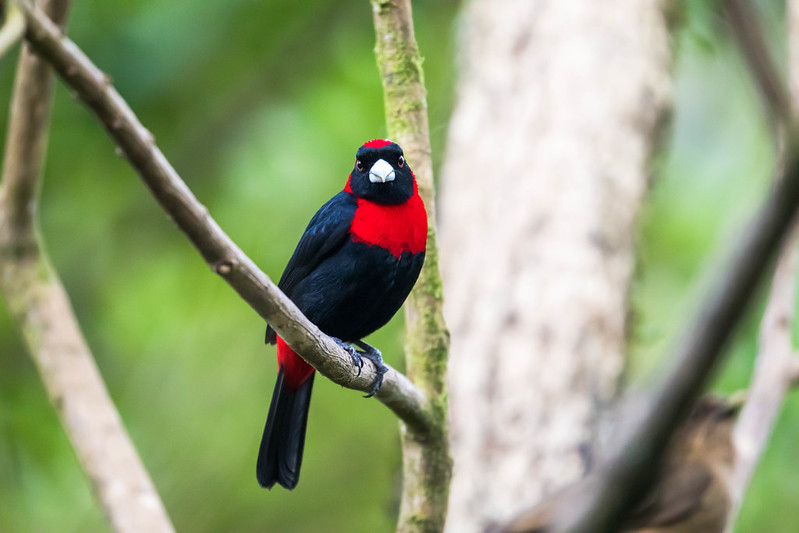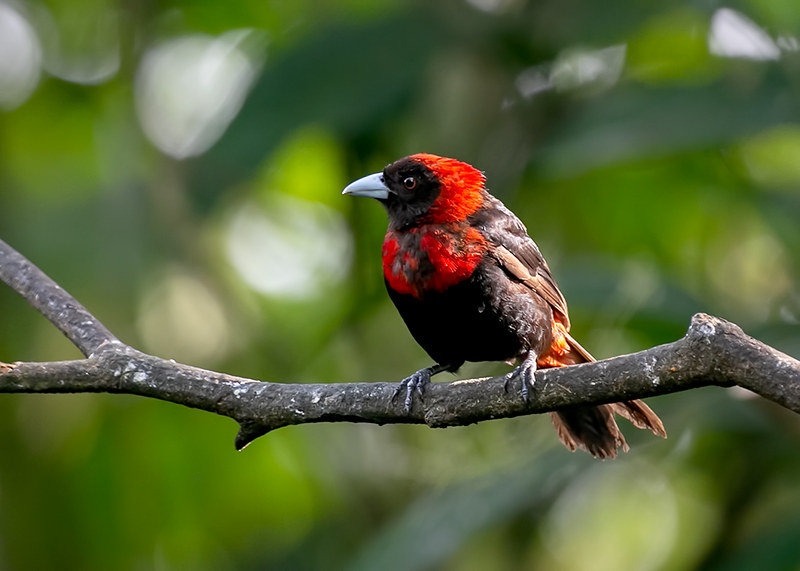The Crimson-collared Tanager, Ramphocelus sanguinolentus, is a small Mesoamerican songbird. Averaging 19–20 cm (7.5–8 in) in length, adult plumage is black with a red collar covering the nape, neck, and breast. All tail coverts are also red. The bill is striking pale blue and the legs are a shade of blue-gray.

Females, on average, are duller than males but can sometimes be indistinguishable. Juvenile birds are similar except that the hood is dull red, the black areas are tinged with brown, and the breast is mottled red and black.

Young birds also have a duller bill color.
These birds range from southern Veracruz and northern Oaxaca in Mexico through the Atlantic slope of Central America, to the highlands of western Panama.
Crimson-collared Tanager likes to inhabit the edges of humid evergreen forests and secondary growth, where they are often seen in pairs at middle to upper tree levels.
The diet of the Crimson-collared Tanager consists of insects and fruits video, but its diet is not known in any detail.

Crimson-collared Tanager builds a cup-shaped nest made out of moss, rootlets, and strips of large leaves such as banana or Heliconia, and is placed at middle height in a tree at a forest edge. Within the female usually lays two eggs, pale blue with blackish spots.
Because the species is not threatened, the population size is very large and the trend appears to be stable, the species is evaluated as of Least Concern on the IUCN list.
